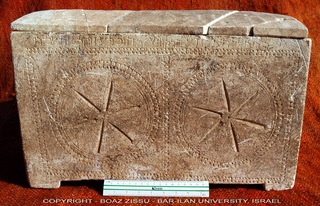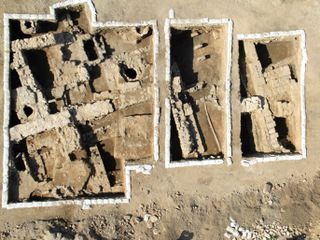Ω
New research sheds light on why, after 300,000 years of domination, European Neanderthals abruptly disappeared. Researchers from the University of Cambridge have discovered that modern humans coming from Africa swarmed the region, arriving with over ten times the population as the Neanderthal inhabitants.
The reasons for the relatively sudden disappearance of the European Neanderthal populations across the continent around 40,000 years ago has for long remained one of the great mysteries of human evolution. After 300 millennia of living, and evidently flourishing, in the cold, sub–glacial environments of central and western Europe, they were rapidly replaced over all areas of the continent by new, anatomically and genetically 'modern' (i.e. Homo sapiens) populations who had originated and evolved in the vastly different tropical environments of Africa.
The most plausible answer to this long-debated question has now been published today, 29 July, in the journal Science by two researchers from the Department of Archaeology at Cambridge – Professor Sir Paul Mellars, Professor Emeritus of Prehistory and Human Evolution, and Jennifer French, a second-year PhD student.
By conducting a detailed statistical analysis of the archaeological evidence from the classic 'Perigord' region of southwestern France, which contains the largest concentration of Neanderthal and early modern human sites in Europe, they have found clear evidence that the earliest modern human populations penetrated the region in at least ten times larger numbers than those of the local Neanderthal populations already established in the same regions. This is reflected in a sharp increase in the total number of occupied sites, much higher densities of occupation residues (i.e. stone tools and animal food remains) in the sites, and bigger areas of occupation in the sites, revealing the formation of much larger and apparently more socially integrated social groupings.
Faced with this dramatic increase in the incoming modern human population, the capacity of the local Neanderthal groups to compete for the same range of living sites, the same range of animal food supplies (principally reindeer, horse, bison and red deer), and the same scarce fuel supplies to tide the groups over the extremely harsh glacial winters, would have been massively undermined. Additionally, almost inevitably, repeated conflicts or confrontations between the two populations would arise for occupation of the most attractive locations and richest food supplies, in which the increased numbers and more highly coordinated activities of the modern human groups would ensure their success over the Neanderthal groups.
The archaeological evidence also strongly suggests that the incoming modern groups possessed superior hunting technologies and equipment (e.g. more effective and long-range hunting spears), and probably more efficient procedures for processing and storing food supplies over the prolonged and exceptionally cold glacial winters. They also appear to have had more wide-ranging social contacts with adjacent human groups to allow for trade and exchange of essential food supplies in times of food scarcity.
Whether the incoming modern human groups also possessed more highly developed brains and associated mental capacities than the Neanderthals remains at present a matter of intense debate. But the sudden appearance of a wide range of complex and sophisticated art forms (including cave paintings), the large-scale production of elaborate decorative items (such as perforated stone and ivory beads, and imported sea shells), and clearly 'symbolic' systems of markings on bone and ivory tools – all entirely lacking among the preceding Neanderthals – strongly point to more elaborate systems of social communications among the modern groups, probably accompanied by more advanced and complex forms of language.
All of these new and more complex behavioural patterns can be shown to have developed first among the ancestral African Homo sapiens populations, at least 20,0000 to 30,000 years before their dispersal from Africa, and progressive colonisation (and replacement of earlier populations) across all regions of Europe and Asia from around 60,000 years onwards.
If, as the latest genetic evidence strongly suggests, the African Homo sapiens and European Neanderthal populations had been evolving separately for at least half a million years, then the emergence of some significant contrasts in the mental capacities of the two lineages would not be a particularly surprising development, in evolutionary terms.
Professor Sir Paul Mellars, Professor Emeritus of Prehistory and Human Evolution at the Department of Archaeology, said: "In any event, it was clearly this range of new technological and behavioural innovations which allowed the modern human populations to invade and survive in much larger population numbers than those of the preceding Neanderthals across the whole of the European continent. Faced with this kind of competition, the Neanderthals seem to have retreated initially into more marginal and less attractive regions of the continent and eventually – within a space of at most a few thousand years – for their populations to have declined to extinction – perhaps accelerated further by sudden climatic deterioration across the continent around 40,000 years ago."
Whatever the precise cultural, behavioural and intellectual contrasts between the Neanderthals and intrusive modern human populations, this new study published in Science demonstrates for the first time the massive numerical supremacy of the earliest modern human populations in western Europe, compared with those of the preceding Neanderthals, and thereby largely resolves one of the most controversial and long-running debates over the rapid decline and extinction of the enigmatic Neanderthal populations.




